- Home
- Applied Ability Awards
The GBK CookbookThe British Food TrustOther
After over 10 years of providing this website as an entirely free service the Trust now hopes that small donations from our viewers will allow the site to continue beyond 2013. |
The Great British Breakfastby Caroline ConranMagnificent British Breakfasts - hot cutlets, pink hams, fried soles, devilled kidneys, little crisp rolls of bacon, dishes of scrambled eggs and sausages, black pudding, a cold grouse or pheasant, a piece of pie and then hot toast in white napkins, fresh rolls, sweet butter, marmalades of all cuts and colours, jams, jellies and pyramids of fruit - 'ah the breakfast', wrote an early nineteenth-century visitor to Scotland, 'that is what redeems the land'.
At the turn of the twentieth century the grand English breakfast - designed to boost the inner man for the morning's sport out of doors, was still going strong, but when the First World War arrived with attendant shortages and a new horror of waste, things were modified to what we would now regard as a more seemly level. In 1933 a bachelor cook, discreetly naming himself 'Gourmet', wrote a little book giving up two whole chapters to the British breakfast, which he regarded as a meal to be eaten only after an hour's pottering about - presumably to get up an appetite. His favourite breakfast, eaten in a Lakeland fishing inn, consisted of a modest five courses:
However, it is an institution worth reviving, even if only at weekends, when there is time to make little special breakfast dishes and to ponder long over the newspaper with a hot pot of coffee on the table. The old breakfast recipes could make breakfast once more into a most enjoyable meal - and could even turn it into brunch which would allow even more time for pottering, another British institution worth reviving. TeaThere is much advice around on the making of tea from this nation whose national drink it has been for more than two centuries. The only thing to be repeated about the making of tea, which is second nature to us all, is the adage from the side of the Victorian teapot: 'Those who love good teaMust please remember me Be sure allow the water to boil Then the tea you will not spoil'. To which can be added - use freshly drawn water. Water re-boiled is only fit for washing up. The following advice is also worth remembering about keeping a pot of tea going and producing more cups: 'Do not drain the pot dry and then fill it up again; fill half the cups at a time and replace in the teapot the water you have taken from it; always with boiling water'.Coffee
The insurance for good cups of coffee is to buy freshly roasted beans, keep them in airtight jars or tins for a maximum of three weeks and grind them freshly for each pot, not forgetting to drink the coffee as soon as it is made. Another essential for excellent coffee is to make it strong: a continental connoisseur said of the eighteenth century coffee houses: 'I would advise those who wish to drink coffee in England to tell the waiters how many cups are to be made with ¸ ounce, or else people will probably bring them a prodigious quantity of brown fluid'.For decent coffee use 25g (1 oz) of beans and about 725 ml (1½ pints) of water to make four cups of coffee. A third vital point concerns the boiling of coffee: 'Boil for six minutes then add a chip or two of gelatine and boil for five minutes more'For those who like hot milk with their coffee: 'without the thick yellow blanket of skin which embarrasses all and disgusts many'Lady Jekyll DBE, a past cookery contributor to The Times, provides the answer. Chocolate'Say what you will it is pleasant to awake every morning, to take early breakfast in the balcony room with the sweet fresh air coming up from the garden through the open glass door; to drink, instead of coffee, a cup of chocolate handed one on a tray.'
Although nowadays, we have cocoa powder to speed up the process, it is nice to know that you can make a delicious breakfast drink from 25g (1 oz) of grated chocolate and 300 ml (½ pint) of milk. The milk should be heated in a saucepan. When it is very hot the chocolate should be added and stirred all the time until boiling point is reached. The pan must be drawn off the heat and stirred vigorously for a little longer. It should then be served at once or if it is not wanted immediately reheated to boiling point again just before serving. Like tea or coffee it must never boil. Porridge
In the Highlands it was customary to eat your porridge walking about and to dip each spoonful into a separate bowl of cold milk - a most awkward performance designed to avid being stabbed in the back while still slightly dulled by the night's sleep. Sugar on porridge was sacrilege although an exceptionally good child might be allowed to trace its initials in treacle on its porridge. Scrambled Eggs
As for buying eggs: 'put the great end to your nose. If it be warm, it is new; if cold, stale'.Rumbled eggs are another great variation. Bacon or Ham with EggsOne of the most reliably delicious dishes throughout the length and breadth of Britain, breakfast eggs and bacon can be eaten with pleasure and relish at any time of day or night. Although 'oeufs sur le plat ˆ l'anglaise', when served in France, are fried in the sizzling fat of the bacon, British traditionalists insist that bacon grilled or crisped in the oven or toasted on a toasting fork in front of a clear fire is infinitely superior. The object is to get the bacon crisp and this is, in fact, quite easy to do in a frying pan. An alternative is to serve ham and eggs. Making fried ham and eggs is an extremely good and welcome way of using up a piece of cooked gammon or ham. Other breakfast dishesThere are many other dishes you could serve at a great breakfast banquet. Here are just a few:
|
||||||||||||||


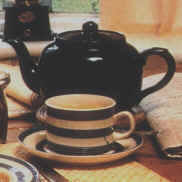
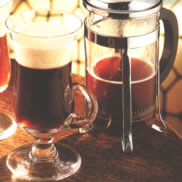
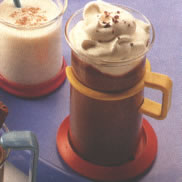
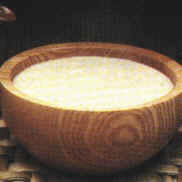
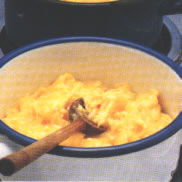
 Top of page
Top of page
 Previous page
Previous page